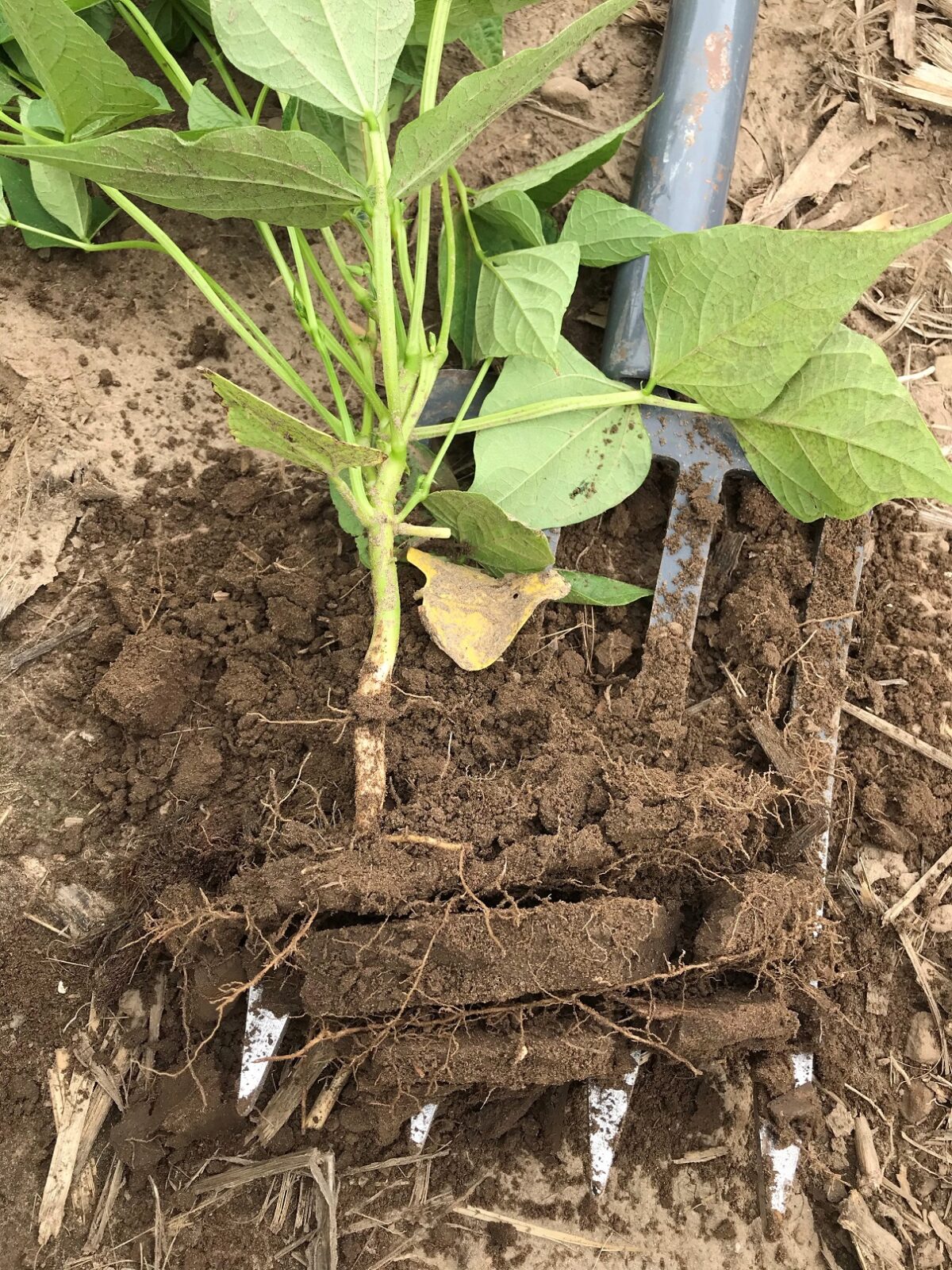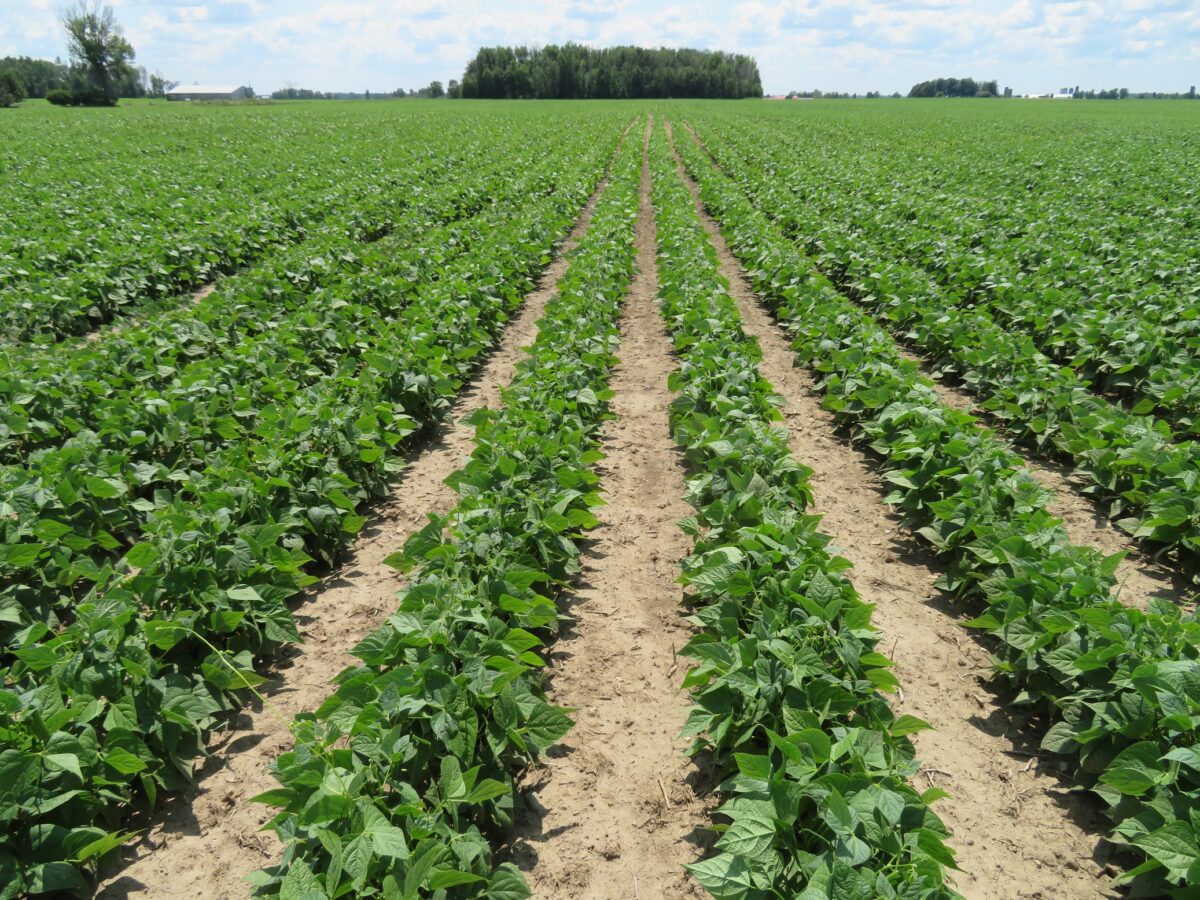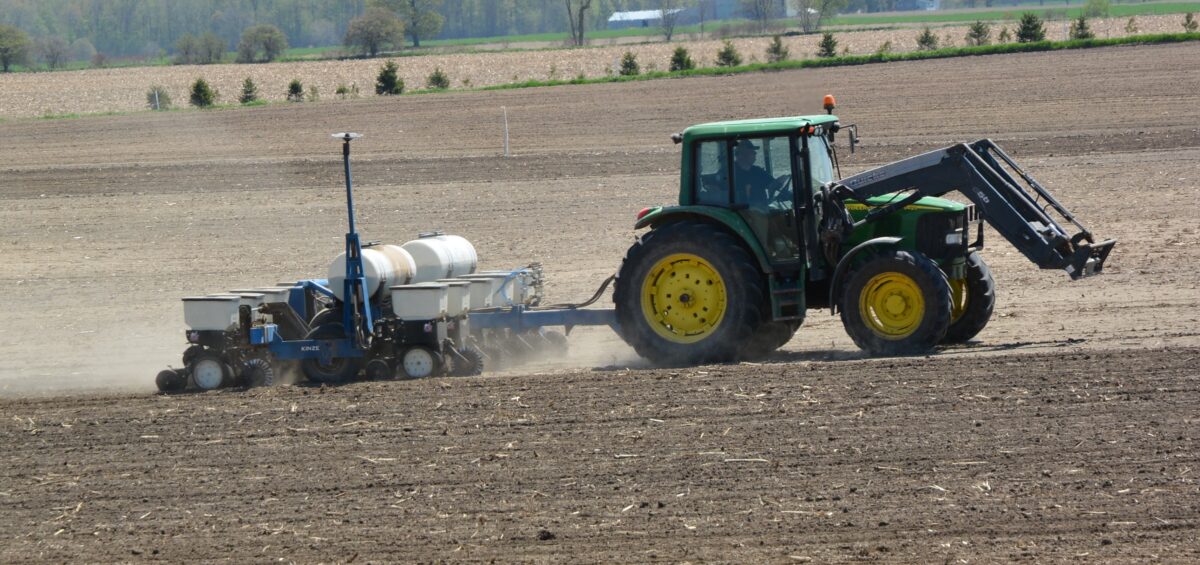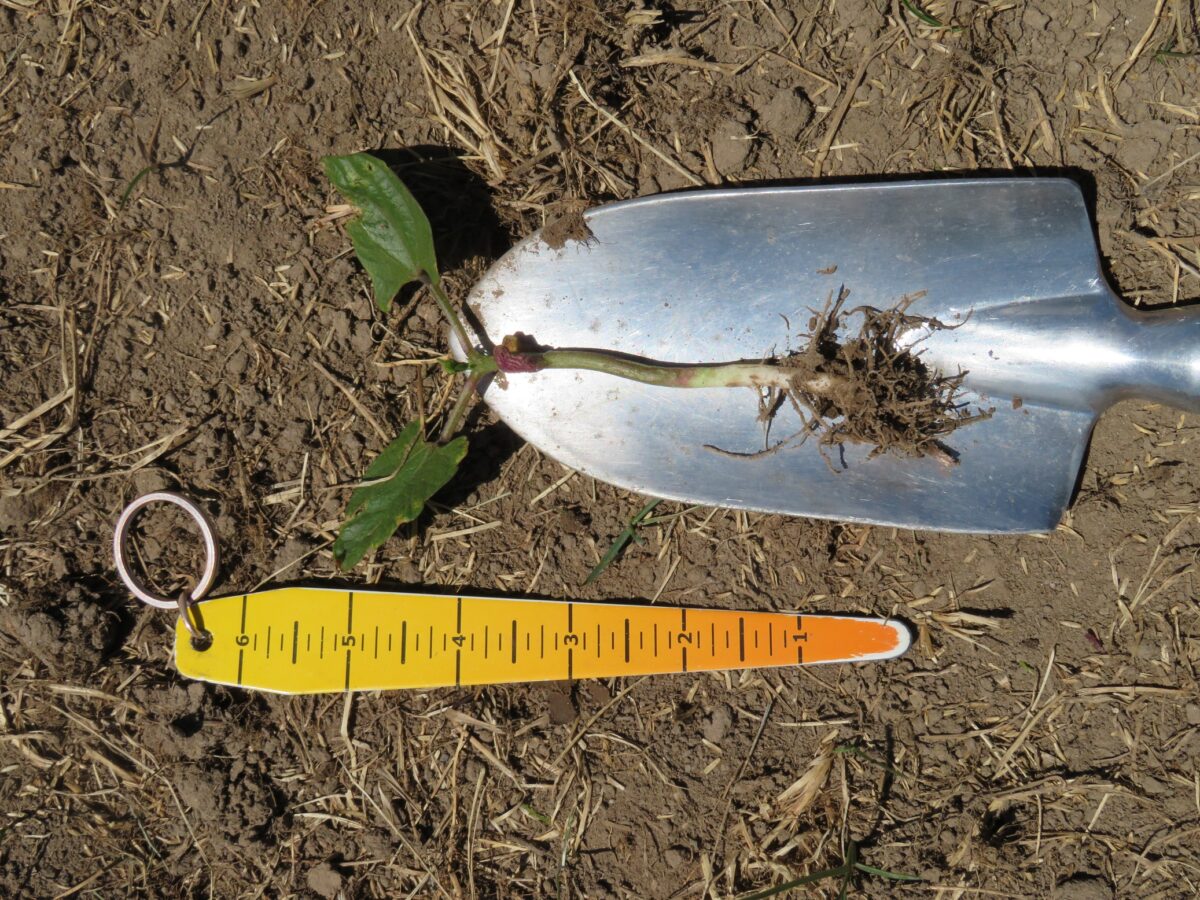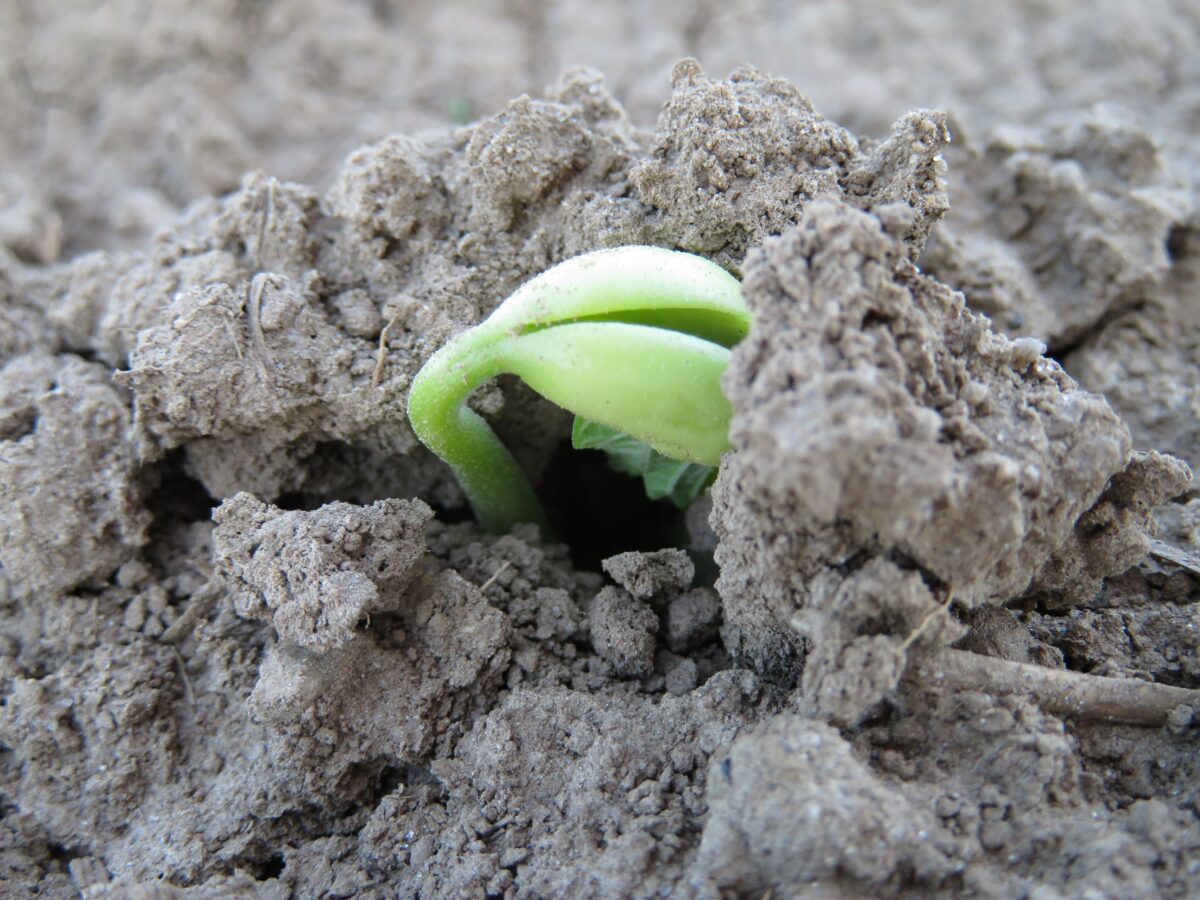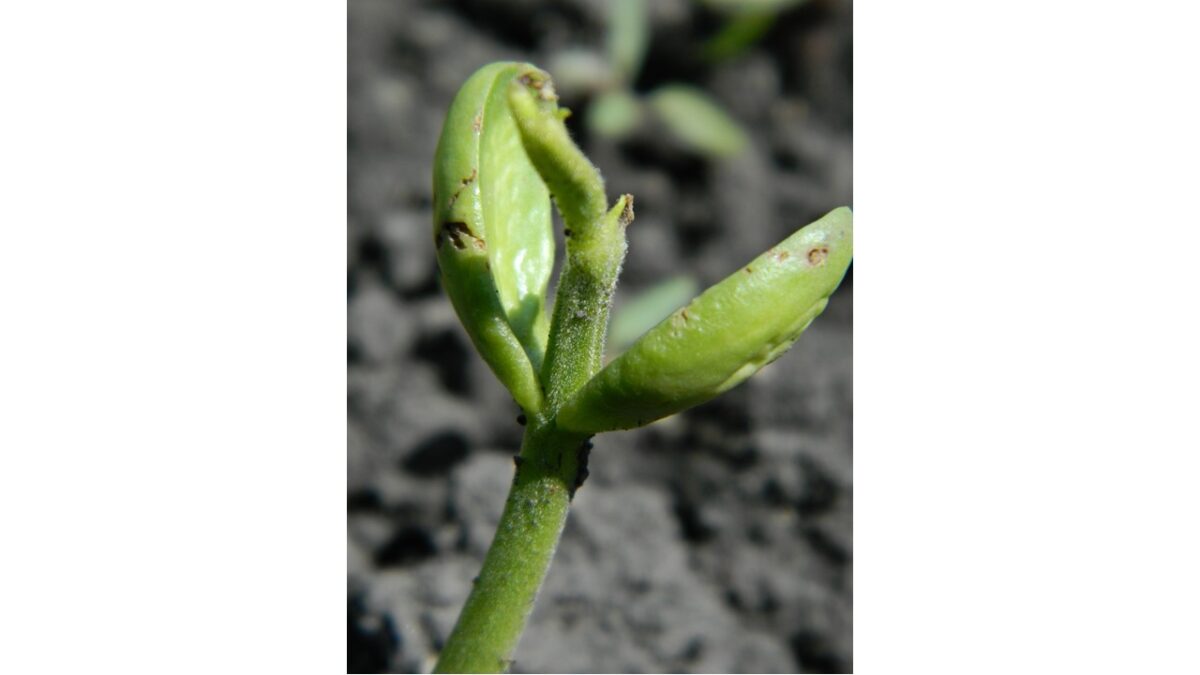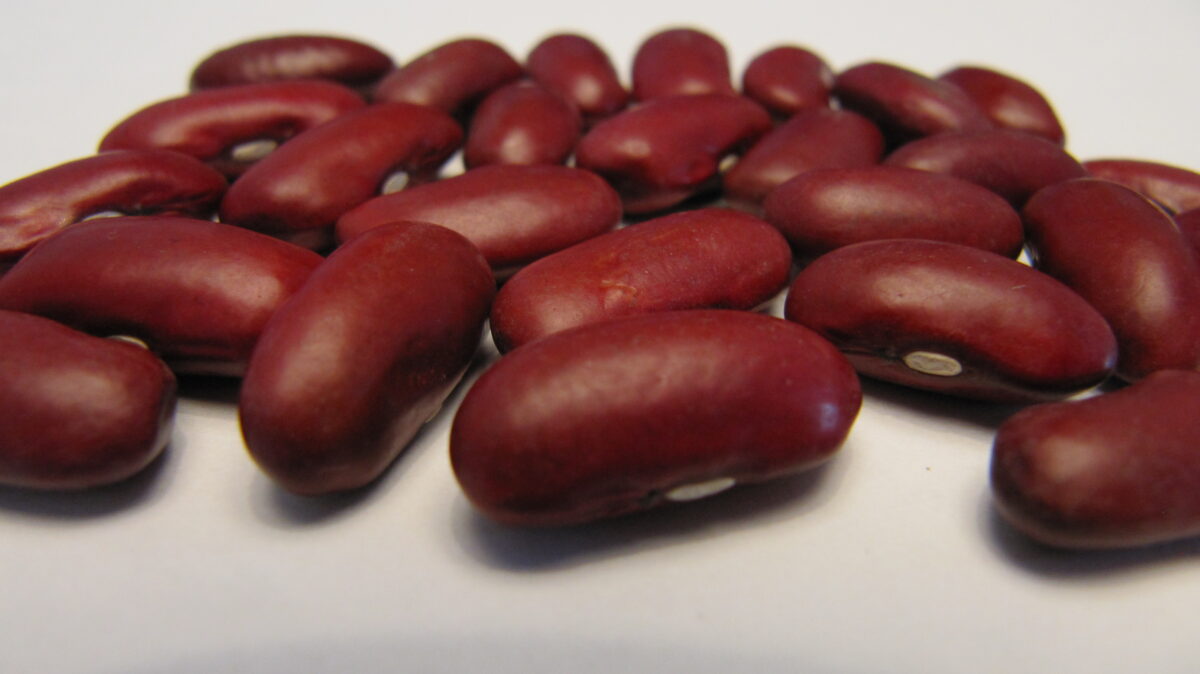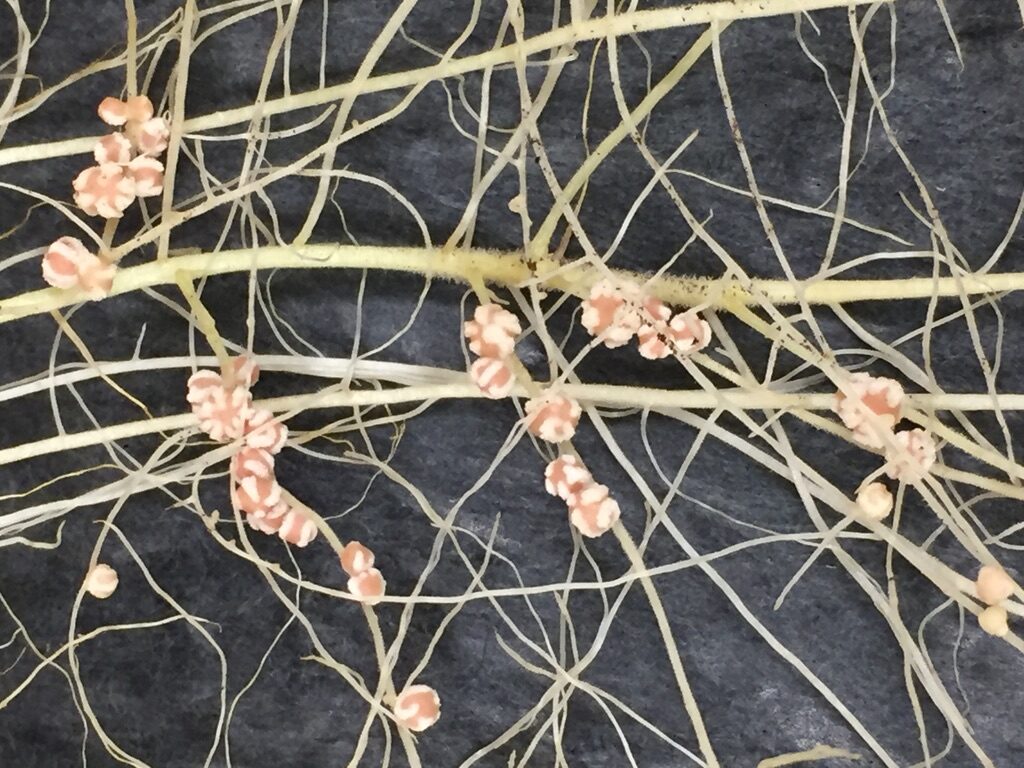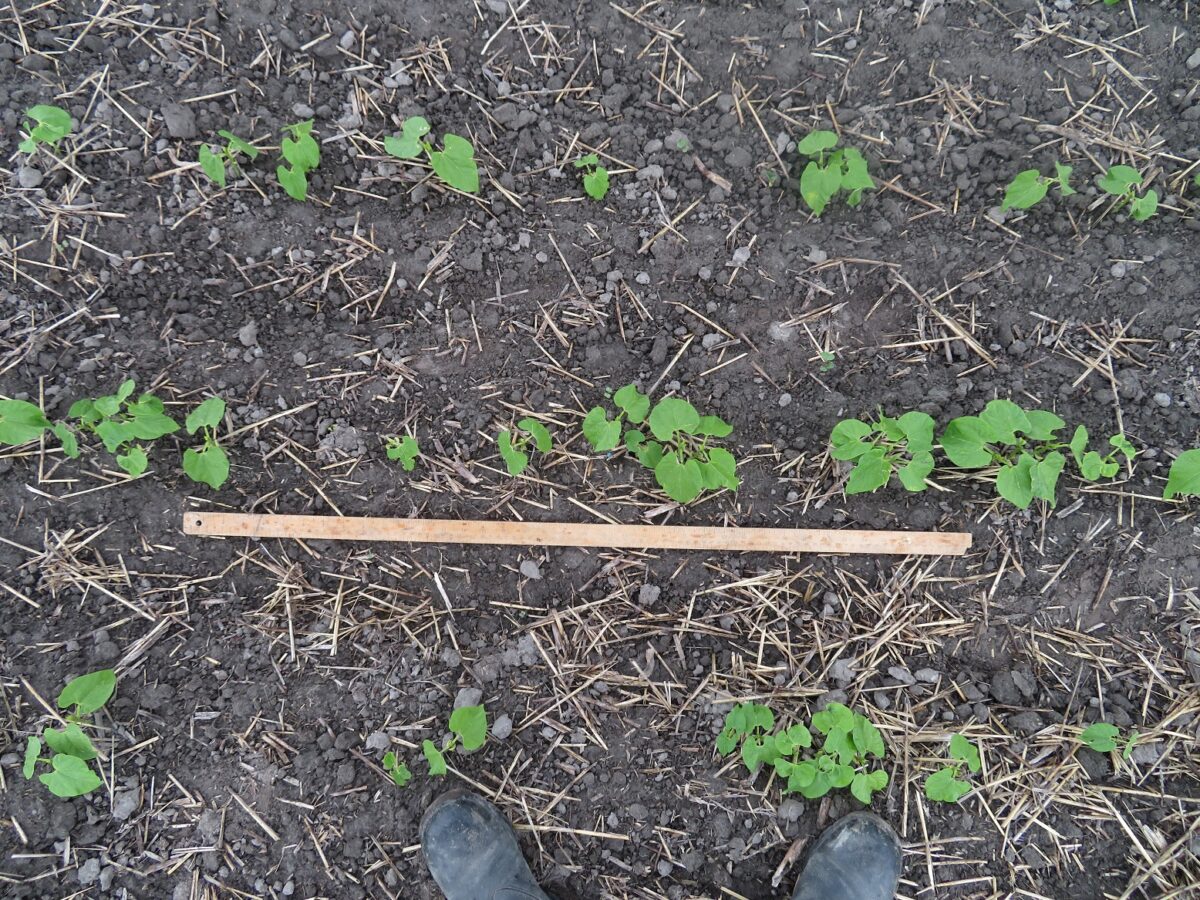Dry edible beans are one of the crops most sensitive to compaction, tillage hard pans or poor soil structure. Often plants become stunted because diminished root growth cannot sustain top growth. Swollen hypocotyls (lower stem) may be observed. Restricted or stressed root systems often develop root rot disease. Options to alleviate compaction or improve soil…Continue readingSoil Compaction and Soil Structure
Author: Ontario Ministry of Agriculture, Food and Rural Affairs
Hail
Hail can be devastating to a dry bean crop. Dry edible beans have a much more limited ability to recover from hail than soybeans. Determinate plant varieties are less likely to recover than Type II indeterminate types. When evaluating hail damage, check for bruising on the plant stem. Stems damaged during the vegetative stage may…Continue readingHail
Row widths of 70–75 cm (28–30 in.) are standard for both white and large-seeded coloured beans when the crop will be pulled and windrowed. In fields with a high risk of white mould, wide row widths are preferred to allow more air circulation in the canopy. Narrow row widths of 36–56 cm (14–22 in.) are…Continue readingRow Width
Seeding Rate
Dry edible bean seed size varies greatly. Check to ensure the planter is calibrated properly to plant the correct number of seeds per meter of row. Adjust seeding rates for seed quality and expected germination rate, field conditions and field history. In conditions where reduced emergence is a risk, increase seeding rates by up to…Continue readingSeeding Rate
Seeding Depth
A seeding depth of 4–6 cm (1.5–2.5 in.) is normal, but deeper plantings of up to 9 cm (3.5 in.) may be necessary to seed into moisture. At minimum, planting depth should be at least 1.2 cm (0.5 in.) into soil moisture. The seeding depth for dry edible beans is critical for uniform emergence. Frequently,…Continue readingSeeding Depth
Planting Date
Generally speaking, early June is the best time to plant dry beans. Planting should occur after the risk of spring frost has past and when there is not a risk of heavy rain after planting. The ideal germination temperature for dry edible beans is 15°C or above. The table below displays the ideal planting dates…Continue readingPlanting Date
Bald Heads
Bald heads refer to seedlings that emerge with damaged or no growing point. Cotyledons (seed leaves) may or may not be present. Plants may develop auxiliary buds at the base of cotyledons but they fail to develop. Without a growing point, plants eventually die. The most common cause of bald heads is mechanical damage to…Continue readingBald Heads
Seed Quality
Using high-quality, pedigreed seed from inspected fields is important to promote early season vigour and reduce the risk of seed-borne disease. Bacterial blights, anthracnose and BCMV are seed-borne diseases that cause serious issues in some years. Most coloured bean seed (except black bean seed) is imported from arid growing regions in the U.S. where there…Continue readingSeed Quality
Inoculation
The species of rhizobia for dry edible beans is Rhizobium leguminosarum biovar phaseoli. Dry edible beans are less efficient at fixing nitrogen through rhizobia than soybeans or other legumes. Inoculation trials and routine use of an inoculant have not shown an economic advantage in Ontario, even though other regions do suggest inoculant use for virgin…Continue readingInoculation
Stand Assessments and Replant Decisions
An adequate stand of dry edible beans is a minimum of two-thirds to three- quarters of a full stand. Dry edible beans have a limited ability to branch and compensate Continue readingStand Assessments and Replant Decisions
